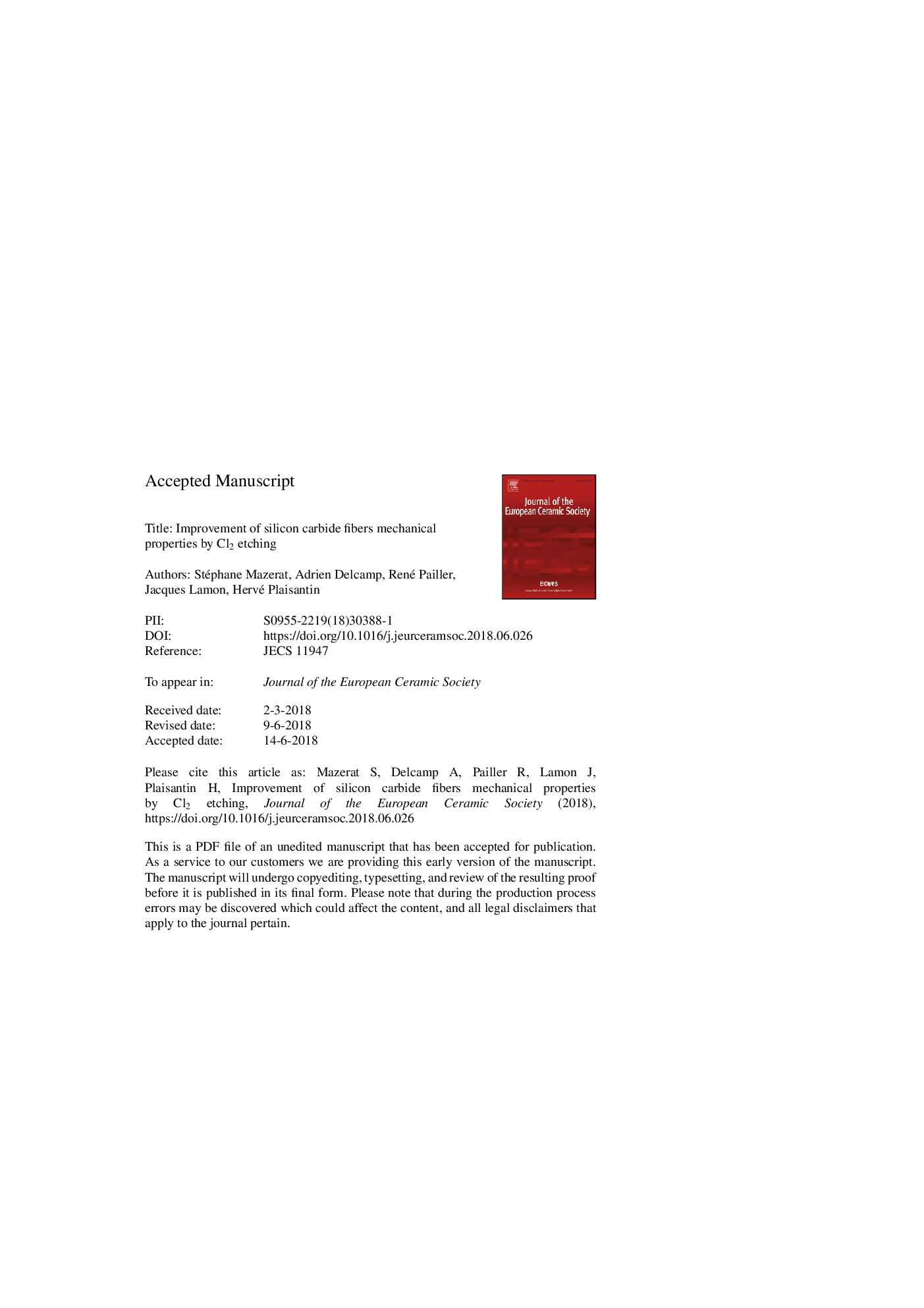| Article ID | Journal | Published Year | Pages | File Type |
|---|---|---|---|---|
| 10155475 | Journal of the European Ceramic Society | 2018 | 23 Pages |
Abstract
Silicon carbide fibers combine structural and refractory properties making them good candidates for ceramic matrix composite reinforcement, driving their ultimate failure. The fractographic observation after tensile tests of various silicon carbide fibers, belonging to first, second or third generations, reveals the critical flaw location i.e. internal or surface. An etching treatment under pure chlorine at 500-850â¯Â°C can be used to transform the fibers surface on hundreds of nanometers and alter the surface-located flaw population. This way, first-generation SiC-based fibers successfully show an asymptotic improvement of tensile strength (up to 60%) and Weibull modulus (up to twice), when etched on 0.3-1â¯Î¼m depth range. The lifetime of bundles, under static fatigue conditions at intermediate temperature, is consequently multiplied by a factor ranging from 10 to 40 with a narrower dispersion. Nevertheless, the tensile strength could neither be increased on second-generation Hi-Nicalon nor dramatically dropped on third-generation Hi-Nicalon-S fiber.
Related Topics
Physical Sciences and Engineering
Materials Science
Ceramics and Composites
Authors
Stéphane Mazerat, Adrien Delcamp, René Pailler, Jacques Lamon, Hervé Plaisantin,
